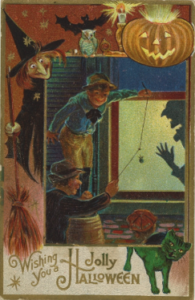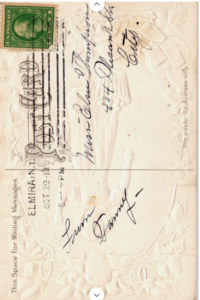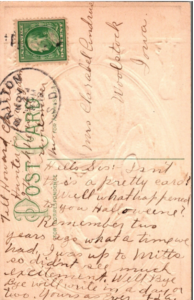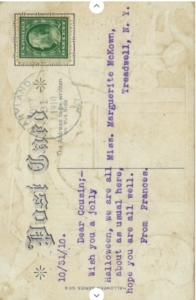
Art & Academia for October 2025
Here are a few of the art and academia pieces I was captivated by this past October. I tried to keep themes spooky and or witchy for Samhain/ Halloween!
Science
Nobel Prize for Chemistry 2025: Hermione’s Enchanted Handbag
Some of you may have heard the Nobel Prize laureates in Chemistry, announced on October 8th, 2025, work was likened to Hermione’s enchanted handbag. The reality might not be quite as fantastical as the enchanted bag from the Harry Potter series, but it’s still pretty freaking cool.
This year’s Nobel Prize went to Susumu Kitagawa, Richard Robson, and Omar Yaghi for their pioneering work on metal-organic frameworks (MOFs).
MOFs are crystalline networks built by linking metal atoms with organic molecules. What makes them interesting is the empty spaces between those links. The space takes the form of pores, tunnels, and cavities, or we can think of it like molecular hallways and rooms. Even though MOF crystals might look like a fine powder grain to the human eye, inside are thousands of repeating microscopic chambers. Which is why they’re compared to Hermione’s enchanted handbag that contains endless room for tents, clothes, and books.
The comparison to Hermione’s magic handbag is more than just a metaphor: the internal space is enormous compared to the material’s size. I will admit that I don’t understand this next part no matter how many ways it’s broken down, but a single gram of MOF material, which is about the size of a paperclip, can have internal surface area greater than a football field, or even two or three! Apparently, that is meant literally! 1 gram = ~ 6,000 m2 of internal surface area. This space is for soaking up huge quantities of gas or water vapor, larger than what would be expected compared to the size of the MOF.
Why is this important, you may ask? These molecules are being engineered for some of the most critical environmental challenges of our time. The capturing of CO2 or other greenhouse gases from the air to slow climate change. Harvesting water from dry desert air to collect drinking water. Filtering toxins like the environmentally harmful forever chemicals (PFAS) and heavy metals. Storing hydrogen for clean energy technologies. The uses depend on the inner labyrinth of the MOF that can hold or release different molecules selectively.
This work represents one of the most promising areas of modern chemistry for addressing pollution, water scarcity, and the climate crisis. If we don’t prioritize such innovations and solutions to the damage we’ve caused, we may soon lose the opportunity to do so.
Poetry
Of course, since it was October, I listened to readings of Edgar Allen Poe. If you don’t want to do the reading yourself, I recommend finding a YouTube video or audiobooks of someone reading poetry. Even if you prefer reading it yourself, I still recommend listening. When I put on a video of curated poems, that inspires me to go look up the piece or author. This morning while making breakfast, I listened to The Raven by Edgar Allen Poe for the first time. I’ve read it before, but listening to it outside of my head was magical.
I think it would be fun to dissect a spooky poem by one of my favorite poets, Emily Dickenson. She was described as a recluse and death obsessed writer. She lived most of her life in near-seclusion in Amherst, Massachusetts, exploring themes of mortality, eternity, and the unseen in her poetry. I would gamble that she would have loved modern day Halloween/ Samhain! She was totally a spooky girl!
She was also a profound thinker, her poetry not only about the macabre, but thoughts about life and existentialism. Considering October and Samhain is about the veil between the worlds being thin, ghostly interactions, and death, I thought Dickenson’s poem Because I Could not Stop for Death would be a fun and relevant one to analyze.
Emily Dickenson
Because I Could not Stop for Death -1863
Because I could not stop for Death –
He kindly stopped for me –
The Carriage held but just Ourselves –
And Immortality.
We slowly drove – He knew no haste
And I had put away
My labor and my leisure too,
For His Civility –
We passed the School, where Children strove
At Recess – in the Ring –
We passed the Fields of Gazing Grain –
We passed the Setting Sun –
Or rather – He passed Us –
The Dews drew quivering and chill –
For only Gossamer, my Gown –
My Tippet – only Tulle –
We paused before a House that seemed
A Swelling of the Ground –
The Roof was scarcely visible –
The Cornice – in the Ground –
Since then – ’tis Centuries – and yet
Feels shorter than the Day
I first surmised the Horses’ Heads
Were toward Eternity –
Stanza 1
“Because I could not stop for Death”, the poem implies that many of us are too busy living life to acknowledge our mortality. “He kindly stopped for me”, here Death is personified as a courteous gentleman who arrives in a carriage, inviting the speaker for a ride. The tone is calm, polite, and maybe even dreamy rather fear.
Stanza 2
“We slowly drove – He knew no haste”, implies that death is in no rush, taking its time or maybe existing outside of time as us humans know it.
The speaker then says, “…put away My labor and my leisure too,”. To me, the speaker means they dropped all things in their life, their work and their pleasures, because they are no longer important in this moment. All Earthly concerns.
Stanza 3
Stanza 3 incorporates experiences and details of daily human life they pass, “We passed the School. Where the Children strove…We passed the Fields of Grazing Grain- We passed the Setting Sun-” Passing all these places symbolizes the speaker leaving these things behind, moving forward. The children symbolize innocence, youth, growth, and thoughts far from mortality. The grain could be sustenance, production, labor, life’s harvest, and passing it is leaving that aspect of life behind. The sun setting could be life setting, old age creeping in as one approaches death. (Wow, the chills)
Stanza 4
“Or rather- He passed Us-” The speaker pauses and shifts perspective. Who is the “He”? This could be the setting sun. This could mean the awareness of the speaker and Death ceased to move within the living world, but the living world moves past them. This moment the speaker realizes they are no longer among the living.
“The Dews drew quivering and chill-” Dew of night starts to form in the cold and damp dark (that was my analysis but sounds like a line of poetry itself lol!). The separation from warmth, vitality, and life.
“For only Gossamer, my Gown- My Tippet- only Tulle-”. First, some definitions: Gossamer refers to a fine, spider-made silk thread consisting of cobwebs and a very light, thin, and gauze-like fabric. Tippet being a woman’s long scarf or shawl as a ceremonial garment. And tulle is a soft, fine silk or cotton material like net for making veils and dresses. This stanza sounds like the speaker is describing ceremonial burial attire. This also sounds like classic spooky, translucent, ghostly dress you’d expect to see a ghost wearing.
Stanza 5
“We paused before a House that seemed A swelling of the Ground-” To me this sounds like a grave because of the swelling ground.
“The Roof was scarcely visible- The Cornice- in the Ground-” This reenforces the house is a grave, since it’s within the ground.
Maybe this poem has a dual interpretation of the speaker traveling as a spirit in their own funeral procession, accompanying their body to its new home. Dickenson is known for multi-meanings. This poem could be metaphoric, or it could be a literal spirit following their body to the grave. Though, I wouldn’t assume spirits go into the grave with their body, so, maybe the poem isn’t even speaking of a spirit but a distant awareness of the body after death. Do we linger somewhere in there?
Stanza 6
Stanza 6 shifts from a present time to an existence beyond time as humans know it. “Since then- ‘tis Centuries- and yet, Feels shorter than the Day” Hundreds of years pass, but at the same time, it feels like it could have been just a day. Time has collapsed.
“I first surmised the Horses’ Heads, Were toward Eternity-” Here the speaker brings back the carriage, noting the horses’ heads were in the direction of eternity. Surmised means to suppose something is true without having evidence, so the speaker knew what the carriage was from the start, and still got in. This shows the lack of emotion and contemplation in death. Only acceptance. Death is a neutral and inevitable act of nature.
The carriage may not have been the transport to the afterlife but IS the afterlife. An infinite passage. This poem doesn’t have closure, it leads on.
Art

Vintage Halloween Postcards
I wanted to find some of the earliest representations of Samhain/ All Hallow’s Eve/ Halloween, but unfortunately there aren’t many paintings depicting the holiday before the 1900s. However, during my search, I came across something fun and aligned with my style.
In the Victorian era, when Halloween became more popularized and commercialized, people began sending postcards of the imagery we now associate with classical Halloween- such as witches, black cats, pumpkins, and other spooks.
The earliest Halloween postcards appeared in the 1880s-1890s, during the golden age of chromolithography, or multicolor printing. They represent the first mass-produced folk-art of Halloween, marking the transition of Samhain’s fires to modern Halloween aesthetics. They were primarily produced in Germany and the U.S., since Germany had the most advanced color presses and exported them worldwide.
By the early 1900s, Halloween postcards had become a cultural phenomenon, millions were mailed between friends and sweethearts. This is when Halloween shifted from rural superstition to a romantic, whimsical, and spooky celebration. The postcards became popular because they were colorful, cheap, and offered a safe, playful way to explore taboo or mysterious themes like death and witchcraft.
There are hundreds online, searchable in archives, Pintrest, or eBay. Simply search “Vintage Halloween Postcards”. I found a few in archives and eBay listings. I included a few with the messages on the back to show that they’re legit:










